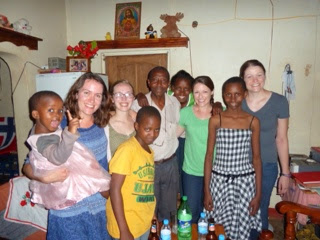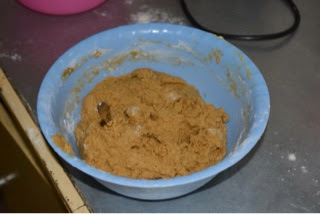Tuesday, April 1, 2014
The neighborhood
Coca-cola is everywhere
Saturday, March 29, 2014
Baba Alfred and transportation in Tanzania
Helping Babies Breathe
Week 3 at KCMC
Friday, March 28, 2014
Laundry, Tanzanian style
The key to Tanzania
Monday, March 24, 2014
Shillings and dollars
Sunday, March 23, 2014
Lake Chala
Friday, March 21, 2014
Week 2 update
Thursday, March 20, 2014
Outreach clinic
Today I went with one of the neurology attendings (the only child neurologist in Tanzania) to the multi-disciplinary outreach clinic outside of Moshi. It's called CCBRT, which stands for Comprehensive Community Based Rehabilitation in Tanzania. The program is funded by the government and an NGO, and is set up to help families with special needs kids, mostly cerebral palsy, to be able to better care for the children at home. A parent, usually the mother, comes for a 1 week stay with her child and is taught by speech, occupational, and physical therapists helpful things for taking care of a special needs child. The clinic also can help find & fit wheelchairs and special stationary chairs to make the children more comfortable and more able to interact with their family & environment. The neurologist goes out every Wednesday for a check-up and to treat seizures, spasticity, or any other medical issues. It seems like a really great place. We saw everything from young babies with developmental delays to a school-aged child who had never seen a doctor or been evaluated for seizures. It is truly a unique set-up, and very well-run.
Wednesday, March 19, 2014
Chocolate chip cookies!
Tuesday, March 18, 2014
Hospital update
We are midway through our 2nd week at KCMC. I think we are getting more accustomed to the new hospital, and a bit more helpful to the other residents and doctors there in the process.
LIfe in the hospital here is very different than in Dallas. It's making me very thankful for the resources and support staff we have at Children's. We have seen sickle cell pain crises, lots of malaria, pneumonia, sepsis, and much more heart disease than I was expected. We even saw a case of measles. Strep pharyngitis goes untreated more often here than in the states, so it's not uncommon to see rheumatic heart disease. Unfortunately, there is only one hospital that sees patients who need cardiac surgery, and even if they're referred there there is no guarantee that they will be a candidate for the trip to India for the surgery. We have several medications to help with symptoms but very little we can do to fix the underlying problems. It can be very sad.
Another big struggles is not being able to communicate with the patients. Back home I can talk to 99.9% of my patients in either English or Spanish, but here I feel very dependent on others due to my lack of Swahili knowledge. It also makes it difficult to win the trust of the children or make them feel at ease, so even non language-dependent things like physical exams can be more challenging.
The payment system here is also very different. There are very few people who have either government or private insurance, so the majority of our patients are self-pay. Which means that before any test can be done the child's parents have to pay for it and bring a receipt. I'd imagine this is a significant financial burden for many families, and may be one of the reasons some families wait so long to seek medical care.
We are learning a lot, and trying to be as helpful as we can. Thanks for reading, and for your prayers & support!
Sunday, March 16, 2014
Pole pole on the "Coca-Cola" trail
Rafiki!
Tuesday, March 11, 2014
Karibu to KCMC!
Saturday, March 8, 2014
Serengeti
http://www.flickr.com/photos/55870995@N08/sets/72157642080255825

















































